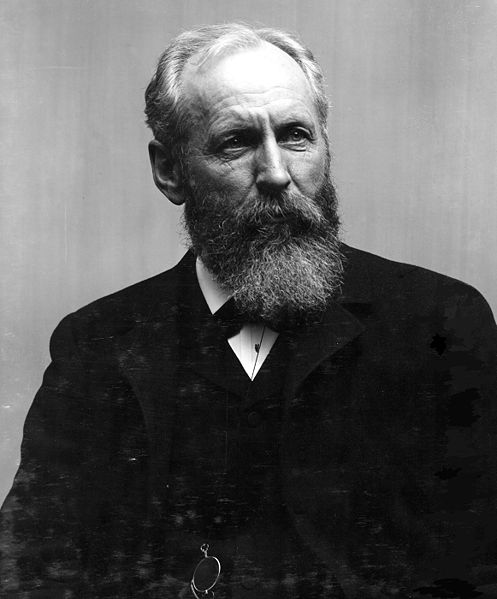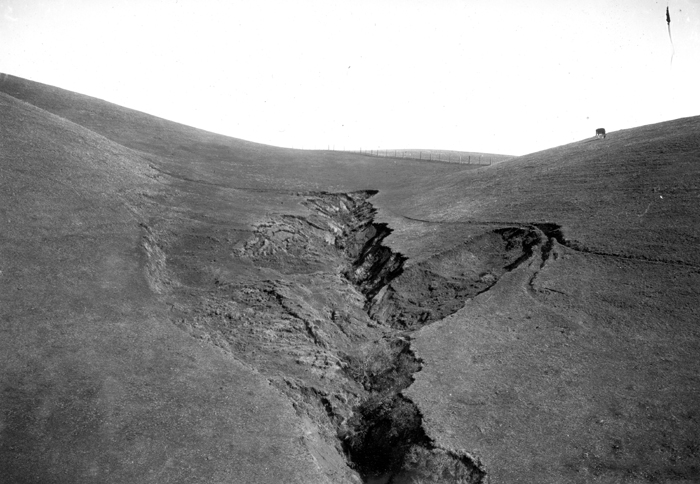<Back to Index>
- Geologist Grove Karl Gilbert, 1843
- Painter Frans Francken the Younger, 1581
- Marshal of the Empire André Masséna, 1758
PAGE SPONSOR


Grove Karl Gilbert (May 6, 1843 – May 1, 1918), known by the abbreviated name G.K. Gilbert in academic literature, was an American geologist.
Gilbert was born in Rochester, New York and graduated from the University of Rochester. In 1871, he joined George M. Wheeler's geographical survey as its first geologist. He then joined the Powell Survey of the Rocky Mountain Region in 1874, becoming Powell's primary assistant, and stayed with the survey until 1879. During this time he published an important monograph, The Geology of the Henry Mountains (1877). After the creation of the U.S. Geological Survey in 1879, he was appointed to the position of Senior Geologist and worked for the USGS until his death (including a term as acting director).
Gilbert published a study of the former ancient Lake Bonneville in 1890 (the lake existed during the Pleistocene), of which the Great Salt Lake is a remnant. He named that lake after the army captain Benjamin L.E. de Bonneville, who had explored this region previously. The type of river delta that Gilbert described at this location has since become known to geomorphologists as a Gilbert delta.
In 1891 in one of the most controversial moves of his career, he proclaimed that
Meteor Crater in Arizona (then referred to as Coon Butte) was the result of a volcanic steam explosion rather than an impact of a meteorite.
Gilbert had based his conclusions on a belief that for an impact
crater, the volume of the crater including the meteorite should be more
than the ejected material on the rim and also a belief that if it was a
meteorite then iron should create magnetic anomalies. Gilbert's
calculations showed that the volume of the crater and the debris on the
rim were roughly equal. Further there were no magnetic anomalies.
Gilbert argued that the meteorite fragments found on the rim were just
"coincidence." Gilbert would publicize these conclusions in a series of
lectures in 1895. Subsequent
investigations would reveal that it was in fact a meteor crater.
Ironically, Gilbert would be among the first to say that the moon's
craters were caused by impact events rather than volcanos.
Gilbert is considered one of the giants of the sub-discipline of geomorphology, having contributed to the understanding of landscape evolution, erosion, river incision and sedimentation. Gilbert was a planetary science pioneer, correctly identifying lunar craters as caused by impacts, and carrying out early impact - cratering experiments. Gilbert was one of the more influential early American geologists.
He won the Wollaston Medal in 1900 from the Geological Society of London. He was awarded the Charles P. Daly Medal by the American Geographical Society in 1910. Gilbert
was well esteemed by all American geologists during his lifetime, and
he is the only geologist to ever be elected twice as President of the
Geological Society of America (1892 and 1909). Because of Gilbert's
prescient insights into planetary geology, the Geological Society of
America created the G.K. Gilbert Award for planetary geology in 1983.
Gilbert's wide ranging scientific ideas were so profound that the Geological Society of America published GSA Special Paper 183 on his research (Yochelson, E.L., editor, 1980, The Scientific Ideas of G.K. Gilbert, fourteen separate biographical chapters, 148 pages).
Craters on the Moon and on Mars are named in his honor. Another crater on Mars was named after the ancient Lake Bonneville.